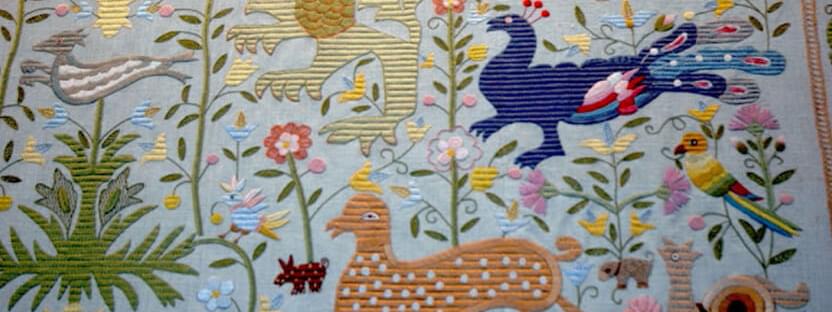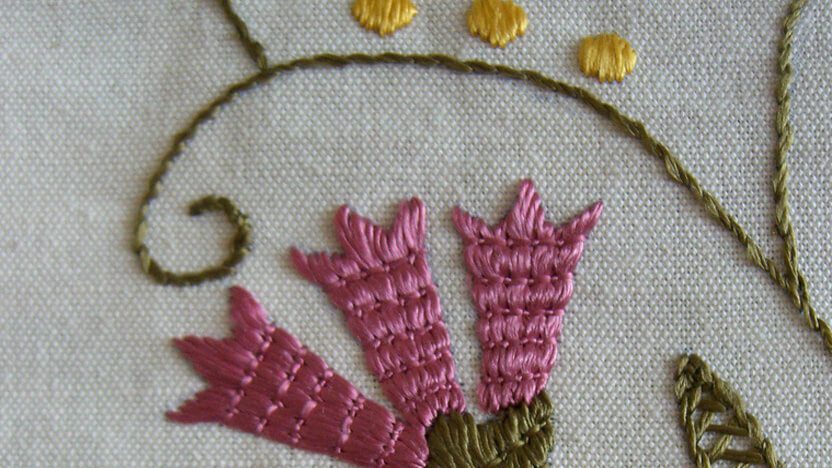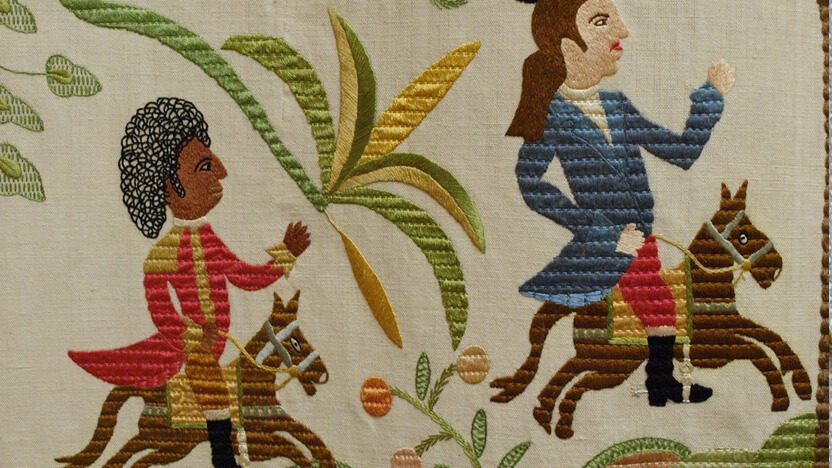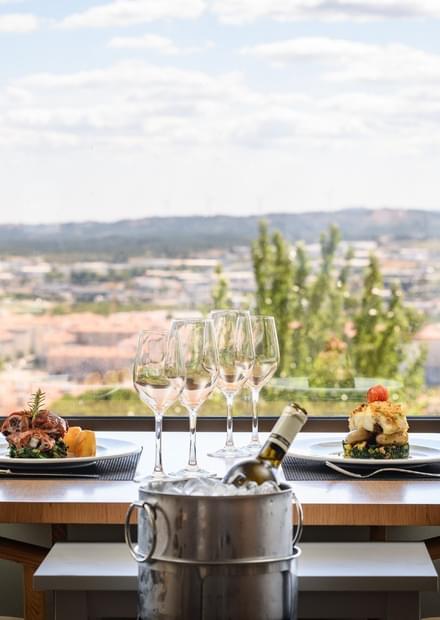The fact of the Iberian Peninsula was under Arab rule led to the production of textiles and embroideries that met the aesthetic canons of the Arab world.
A long period of Christian conquest was not particularly favourable to the development of the art of embroidery. Portuguese embroidery only grew late and unexpected factors have made it difficult to see how it was in the Middle Ages. We only know that it was only from the late 16th century that a high quality textile production began to have shape. One of the consequences of political, religious and economic expansion led by the Portuguese resulted in the exchange of new cultural and artistic forms. The Portuguese soon understood how skilfully the Indian women worked. From the end of the 16th century to the end of the 18th century, there was a huge increase in the demand for one-coloured or multicoloured embroideries. These embroideries actually told a story or were symbols of prestige and wealth.
The specimens from the East were mostly for suspension; some bedspreads were quilted; other were decorated with banners, depicting biblical scenes or heroic scenes; plants, among others.
In the embroidery made in Portugal the suggestions of Western lifestyle were highlighted. However, a strong Easter-influenced taste did not cease to inspire them in terms of its composition and decoration.
No wonder that all this production carried out in several spots with different meanings and styles had a tremendous influence on the embroidery of Castelo Branco, particularly in more elaborate works that in terms of themes and elaboration reveal a great resemblance to the Indo-Portuguese embroidery.
Ornamental themes
The representation of flora is immense and in such a variety of ways that sometimes it is very hard to assess its meaning, because it is deeply stylised and complex, even suggesting an overlapping of species. The peony, the lotus, the chrysanthemum and the knob of the plum tree, very popular in Chinese civilization, associated respectively to Spring, Summer, Autumn and Winter. These are flowers that can be often seen in this embroidery.
The “albadarra”, an Arabic term that means a vase with two handles, is a frequent theme in the embroidery of Castelo Branco, both in the form of an elegant vase, as well as a low and wide bowl, evoking the vessel as a symbol of fertility and probably inspired by the theme of the Tree of Life with eastern origins.








